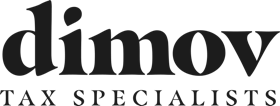Award-winning global customer service.
★★★★★ 5/5
Dimov Tax is rated 5 stars on all major review platforms including Google, Yelp, Facebook, Angie’s List, Better Business Bureau, TaxBuzz, Thumbtack, Upwork, Bark, and much more.

The Section 481(a) adjustment plays a significant role for taxpayers undergoing changes in accounting methods. Whether to align with new regulatory requirements, improve financial accuracy or streamline operations, when a business or individual decides to alter their accounting method Section 481(a) adjustments become essential.
These adjustments ensure that income is not duplicated or omitted due to the change in accounting method, maintaining the integrity and consistency of financial reporting. Dimov Tax & CPA Services is dedicated to helping clients comprehend and manage these adjustments effectively by ensuring compliance and optimal tax outcomes.
A Section 481(a) adjustment is an important tool within the U.S. tax system. It addresses changes in a taxpayer’s accounting method. When an individual or a business entity taxpayer decides to alter the method by which they report income and expenses, it is essential to account for the cumulative differences that arise from this change. This ensures that neither income nor expenses are duplicated or omitted in transitioning from one accounting method to another.
The primary purpose of a Section 481(a) adjustment is to prevent distortions in taxable income that could occur if the changes in accounting methods were implemented without any adjustments.
For instance, if a business switches from the cash method to the accrual method of accounting, certain income and expense items might have been recorded differently under the new method. Without a Section 481(a) adjustment, these items could be double counted or entirely overlooked. This would lead to inaccuracies in reported taxable income.
Section 481(a)
The regulation is specifically governed under Section 481(a) of the Internal Revenue Code. The process of making a Section 481(a) adjustment is further detailed in various IRS guidelines and publications which provide instructions on how to calculate and report these adjustments. Taxpayers are typically required to file Form 3115, “Application for Change in Accounting Method,” to initiate the change and determine the necessary adjustment. This form must be submitted to the IRS and includes detailed information about the nature of the accounting change and the calculated Section 481(a) adjustment. For more information on Form 3115, you may visit our relevant article by clicking here.
Section 481(a) adjustments are applicable to any taxpayer who changes their accounting method. It includes Individuals, businesses, non profit organizations, trusts and estates.
The steps involved in implementing a Section 481(a) adjustment are not only important for ensuring compliance but also vital for accuracy in financial reporting. The process steps may be listed below:
By following these steps, taxpayers can ensure that their transition to a new accounting method is smooth, compliant with IRS regulations and minimizes any potential negative impact on their taxable income. Dimov Tax & CPA Services offers expert assistance at every stage of this process and provides tailored solutions to meet each client’s unique needs and circumstances. Our comprehensive suite of services with Section 481(a) adjustments may be listed as below:
The complexities of Section 481(a) adjustments can be daunting but these adjustments can be managed effectively and compliance and optimal tax results could be ensured with professional support. By understanding what Section 481(a) adjustments entail, who is required to fulfill these obligations and the detailed process involved, taxpayers can approach this aspect of tax compliance with confidence and clarity.
Dimov Tax & CPA Services is ready to support and help our clients make informed decisions and achieve the best possible outcomes in their accounting method changes. Whether it’s consultation, calculation or audit support, our team is equipped to handle all aspects of Section 481(a) adjustments.
Call us today at (833) 829-1120, email us at info@dimovtax.com, or fill out the form and we’ll get in touch immediately.
"*" indicates required fields
Dimov Tax is rated 5 stars on all major review platforms including Google, Yelp, Facebook, Angie’s List, Better Business Bureau, TaxBuzz, Thumbtack, Upwork, Bark, and much more.

